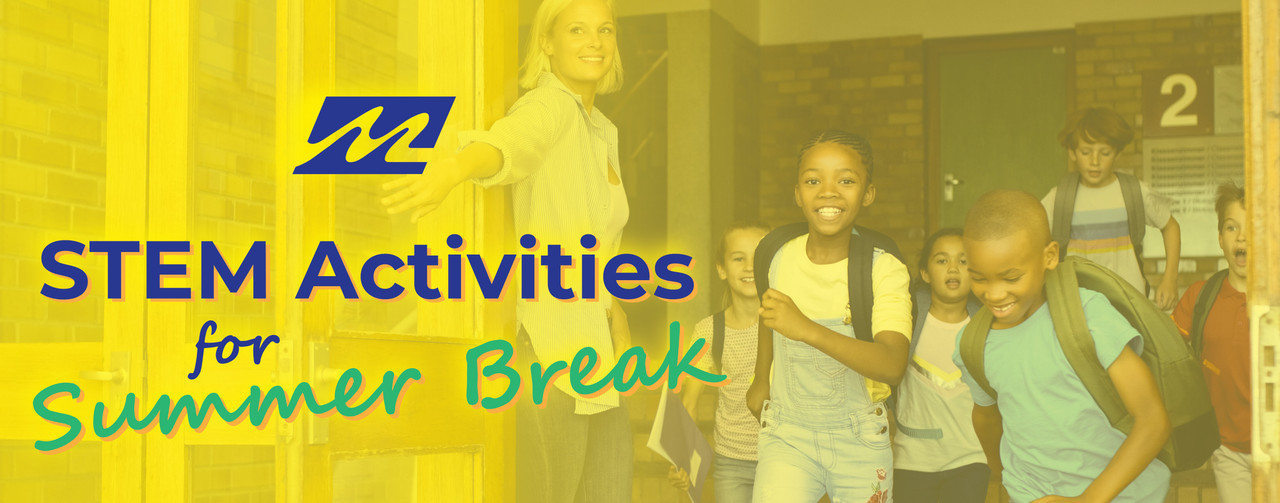Just because the school year is ending doesn’t mean the learning has to stop! Before you say goodbye to your students for the summer, share these STEM activities they can do at home over the break! When you meet back up in the fall, take the opportunity to reconnect and try one of these experiments in your classroom. Compare results with what your students achieved and start the year with engaging conversation!
Create Your Own Fireworks
With baking soda, vinegar, cookie cutters, glitter, and a few household tools, kids can light up the night sky with their own homemade fireworks. Whether they want to celebrate the end of school, Fourth of July, or a summer birthday, kids will enjoy making their own fireworks. They’ll learn about the chemical reaction between vinegar and baking soda and how it produces a bubbling effect with the glitter that makes it look like fireworks.
Design a Rube Goldberg Machine
Bring a little Christmas to July by recreating the traps Kevin McCallister uses to thwart Harry and Marv in Home Alone! Using random objects around the house, kids can set up a Rube Goldberg machine to make toast, turn on the TV, or even start the coffee pot for their parents! This exercise helps with design thinking and learning about cause and effect. Have students film their final project and upload to the class website to share with others!
3 Little Pigs Challenge
In this activity, students will simulate the story of The 3 Little Pigs and design three structures that will hold up against The Big Bad Wolf’s huffing and puffing. Students can choose to create all three models themselves, or split the work among teams and make it a competition. They may use any available materials to build their houses, but we recommend popsicle sticks, straws, index cards, and scale model lumber, mini bricks, or cinder blocks. Once constructed, blow a fan at the houses for 20 seconds. Whichever remains standing is the winner!
Build a Circuit
Whether you send them home with a pre-designed electronics project kit or encourage a DIY method with simple household objects, building a circuit is a great way for kids to learn more about how electricity works. Have students collect D or AA batteries, small LED bulbs like holiday lights, copper wires or aluminum foil, alligator clips or aluminum paper clips, electrodes or nails, and a beaker, glass mason jar, or glass measuring cup. With these items, students can test whether certain liquids conduct electricity. Have them try vinegar, orange juice, milk, or anything else they have at home!
Bringing Educational STEM Toys and Kits to the Home
Technology products like inventor kits, robotics kits, science kits, and other STEM products for schools don’t have to be limited to the classroom. Encourage students to continue learning more about the topics you’ve covered in this year’s lessons during their summer break. Students will feel like they’re participating in a fun challenge, and parents will appreciate the screen-less activities to keep kids busy.
You may consider sending a few technology supplies home with students at the end of the year, or dropping them off mid-summer as a nice way to check in. Staying connected over summer also makes for an easier transition back to the classroom in the fall!

